Eight years ago. EIGHT. 8!!!
I wrote this: The Perfect Bookstore.
Never underestimate the commercial value of mental illness.

Eight years ago. EIGHT. 8!!!
I wrote this: The Perfect Bookstore.
For whatever reason, NetGalley has decided to start putting tighter restrictions implemented publishers’ tightening of restrictions on who gets free eARCs (electronic Advanced Reader Copies).
So what.
Here’s the thing: NetGalley charges what is, to me, a micropress, an astronomical amount of money to give away books. That’s right: I would be paying to give my product to people in exchange for … very little in the way of a quantifiable return.
NetGalley is not in business to lose money. It’s in business to make money by providing a publishers’ colony. However publishers decide to define their ROI (return on investment) is how NetGalley’s going to be bringing in the money.
Follow the money.
When all other explanations fail, just follow the money.
Go read this and all the comments, then come back. Now we’ll recap.
Footprint: A narrow storefront on the county square of a small midwestern city, with three floors. (I didn’t bother with the third floor sketch. Use your imagination.)
Complaint: It’s not a “real” bookstore.
Disclaimers: 1) I’m not an industrial designer so don’t ding me on scale, lack of bathrooms, and walking space, etc etc etc. 2) This is an IDEA. Don’t take me to task as if I’m on the cusp of taking over the world and implementing all these in a grand sweep tonight while you sleep.
Goal: To make the bookstore a destination, not a stop on your to-do list.
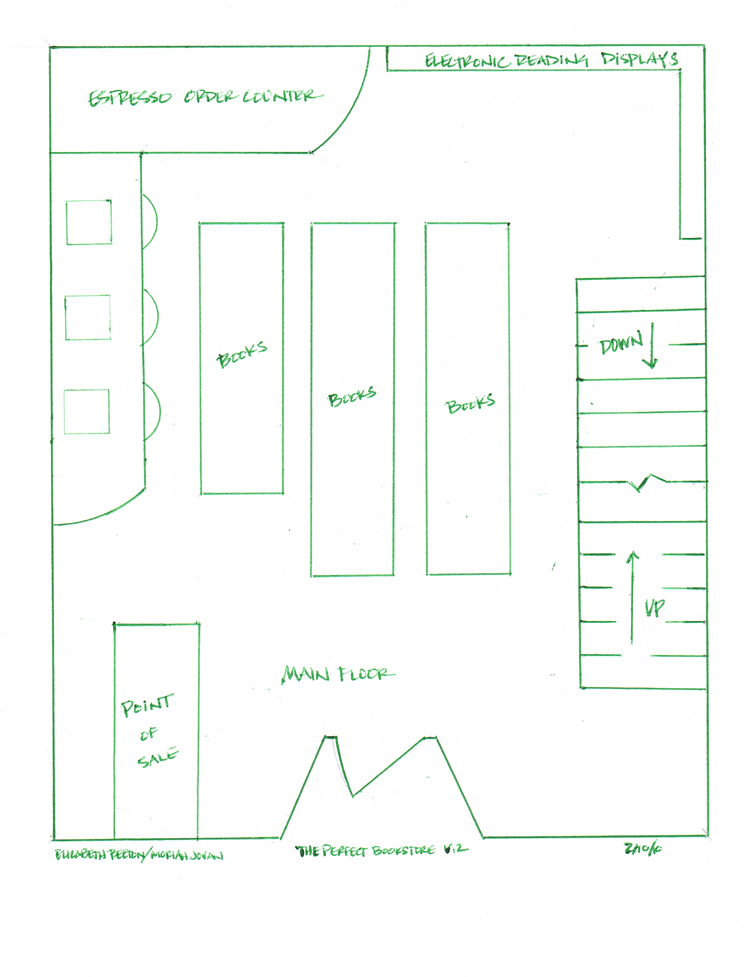
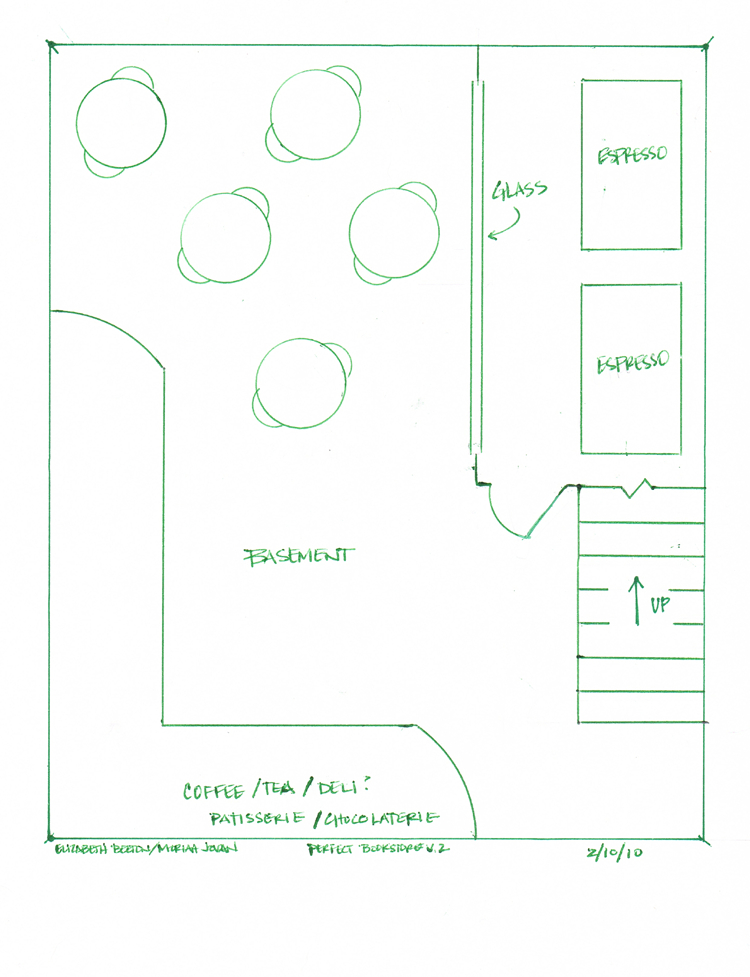
I. Print on Demand
This is the key to blending the Espresso and “real” books:
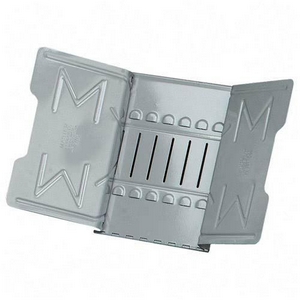
II. eReading
You may purchase the most current electronic reading devices and be advised by someone who actually knows what they are, how they work, and can teach you. There will be workshops.
III. “Real” books
IV. Sustenance
In the basement there will be a coffee/tea bar with pastries and chocolate, possibly a small deli. There will be ample room to hang out.
V. Extras
There you go. Blast away.
The Pareto Principle.
Also known as the 80/20 rule, wherein 80% of sales are generated by 20% of the customers. When applied to the way publishing gambles on blockbusters to subsidize its titles that lose money, it might be more or less 20% of the authors make 80% of the sales.
Publishers look for and sign new authors in a neverending search for the next blockbuster book that will sustain the 20%. Very often a new author will be taken on in favor of renewing a current author’s second or third book if the sales don’t meet expectations (which could mean that it did, in fact, make money, but not enough to satisfy the bean counters).
Last month, I was involved in a rigorous discussion on Dear Author, wherein author Courtney Milan likened publishing’s ability to support this model to pooling risk or, more precisely, flood insurance. I found the flood insurance specificity to be flawed and said why, but really I found the whole “risk pooling” argument flawed, but couldn’t articulate it, so I remained agnostic on the subject for the moment.
Now, after having stewed on it for a while, the better (read: more polite) analogy would be research and development—except without so much the development part.
Recently, president of Farrar, Straus & Giroux, Jonathan Galassi, wrote an extraordinarily unorganized, incohesive rant op ed piece in the New York Times concerning whose rights are whose once the publishing house has put its resources into a manuscript to make it a salable product. Quite frankly, other than the amusing fact that he (an editor) wrote an essay not worthy of a high school freshman learning the basics of English composition, I don’t give a shit about what he thinks the publishers’ value-added rights are.
It was his exemplar of an author long dead, into whom marketing resources were invested to make him that success, that struck me as disingenuous. And a non sequitur. Or ignernt. Dude. You do realize that very few new authors are given these kinds of resources, right? Publishers throw new authors at the wall to see who sticks. There is no “development” counterpart to “research.”
Given that, I’ve moved on from a publisher’s resource allocation to be “risk pooling,” to “research and development,” to “shotgun approach.”
Hang with me—I know I’m only about the 1,537th person to say this, but I do have a point.
So yesterday on Teleread, Rich Adin from An American Editor opined that the way to save publishing is to kill the paperback. When the usual suspects (me) broke out with the usual reaction (Are you out of your fucking mind?), he shot back with, “Well, do you have any better ideas?”
Never mind I have no interest one way or another whether publishing remains profitable, and it’s not my job to put little slips in the suggestion box that will be ignored, and people (readers) have been screaming their fool heads off about what they want which would keep publishing profitable and publishing’s just not paying attention, I will tell you how to keep publishing profitable:
Do less research.
Put a little more development into your research.
Quit getting caught up in auction fever.
Embrace the e-book and treat it as deferentially as you do your other formats and respect those people willing to pay for it. Court them. Cultivate them. They have money to spend on books. Really.
The point is to make every title profitable, or as close to it as you can get.
But I don’t really think you care.
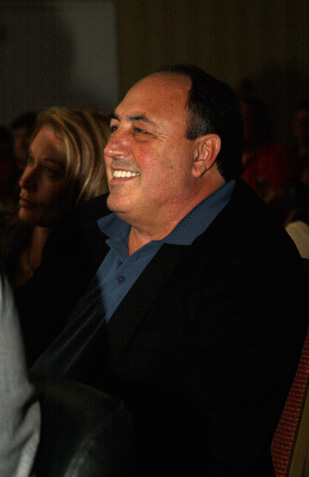 Hang with me for a series of seemingly unrelated factoids.
Hang with me for a series of seemingly unrelated factoids.
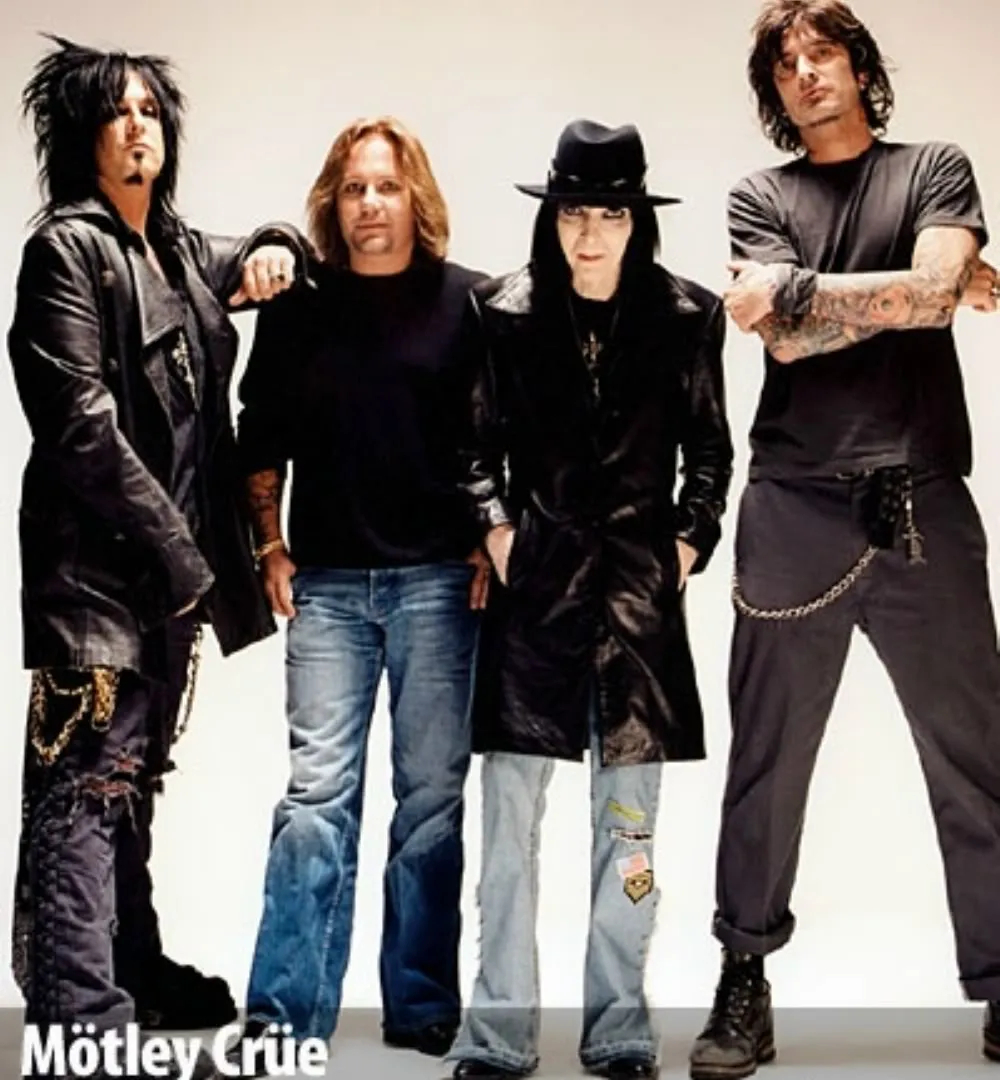
I’m not going to explain any of this stuff. The graphic should make it, well, graphically obvious. Take the above seemingly unrelated items, throw it in with this, and see what you come up with. Assume the writer has not himself arranged for the actual production of his manuscript into print and electronic:
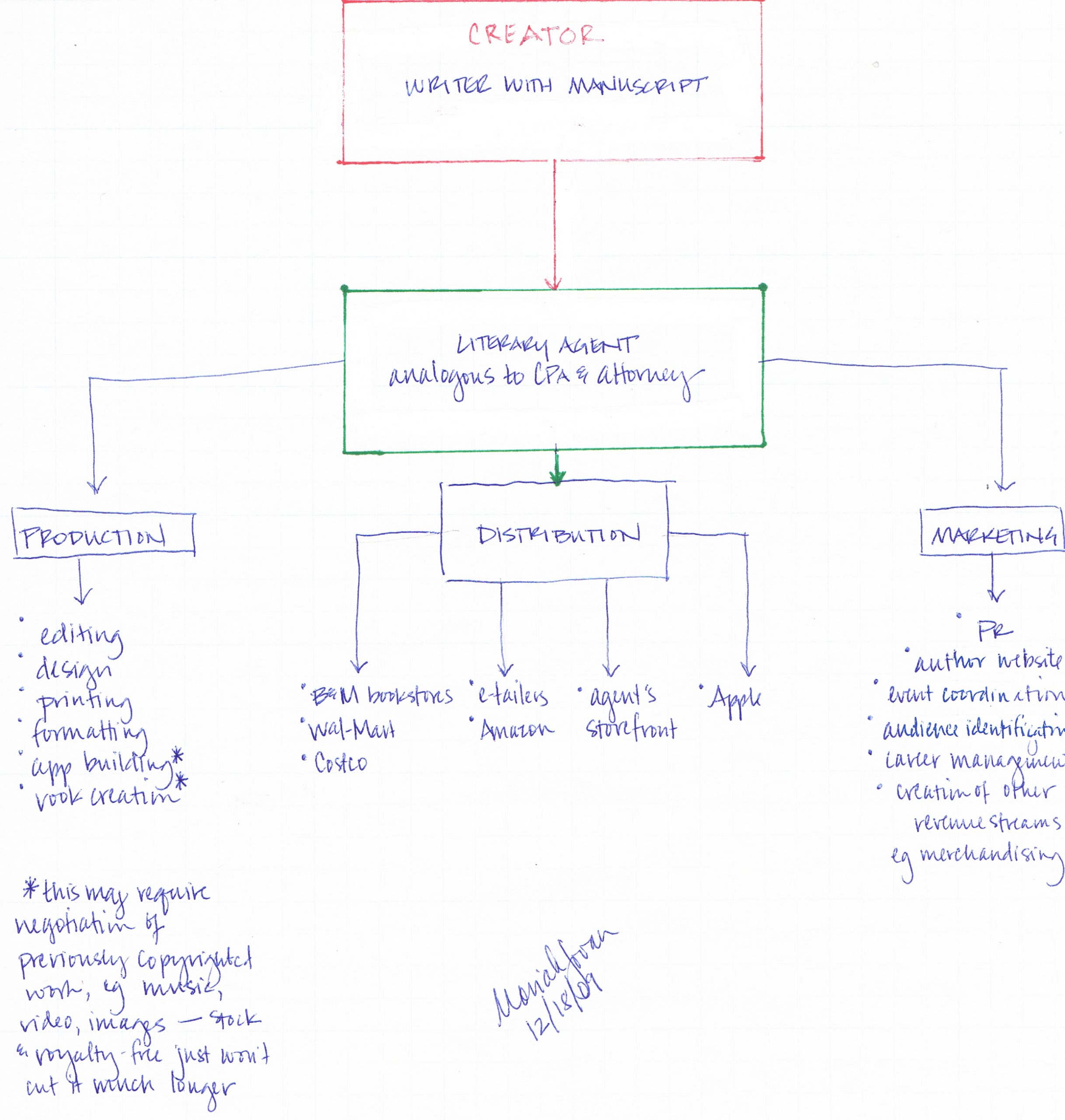
Pop quiz: What word is nowhere to be found in the above flowchart?
I think there’s one agent out there who already knows all this and is slowly, steadily—over weeks, months, years—training his blog readers to start thinking this way.
The difference between how agents work now and how this could work is that a writer would interview agents and hire one (as s/he would an attorney or CPA), as opposed to becoming a supplicant for the agent’s approbation/validation. Agents who now work as if they’re doing writers a favor may not deal with this system well.
On the other hand, even though this is my own plan, I can see that it could land us right back where we are now if writers won’t let go of the thought that they’re powerless and/or only incidental to the book creation process.
Writers, listen up: You’re the creator. There’s power in being the originator of content. Use that power and take control of your own destiny. It’s your work. Take responsibility for its dissemination.
In case nobody’s noticed, my Perfect Bookstore post has garnered a wee bit of attention here and there around the interwebz, thanks to @RonHogan who linked me in GalleyCat and then Teleread picked me up.
![Tweets between me and @RonHogan on July 7, 2009. Tweet from me: “@RonHogan Dude, you put me on about a gazillion print-book lovers’ hit lists. Heeeee!!!” Reply from @RonHogan: “Heh. And that was after I decided AGAINST titling the post ‘Who is Morian [sic] Jovan And Why Does She Hate Paper Books So Much?’”](https://moriahjovan.com/talesofdunham/wp-content/uploads/2009/07/20090729_ronhogantweet.jpg)
I’ve been to very few of the pingbacks, but of the ones I have, quite a few of them described the post as cheeky.1 I like that. I like that they recognized that instead of presenting it like I was completely serious and the plan/design was complete. I have lots of ideas about a whole lot of things. Most of them are half-assed.
______________________________
1. My vision of “cheeky” is Mary Poppins standing in front of her mirror and lightly chastising her reflection for one-upping her. So, um, for non-regular visitors to the blog, I’m pretty cheeky about everything.
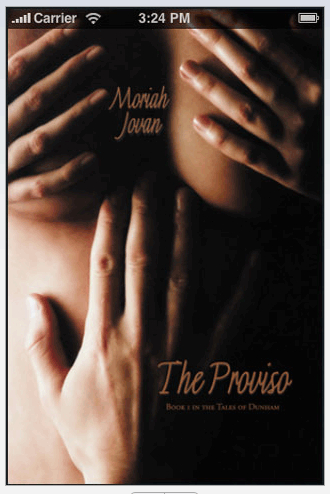
Finally!
After six months, unceasing wailing, and a solid refusal to censor myself, The Proviso was finally approved for sale as an application in the Apple iTunes store.
Go get it!
(Now I don’t feel hypocritical by naming iPhone names in Stay, because, you know, Eric would be on top of all manner of gadgetry.)
Keep your day job.
Accept that you will not be able to quit your day job.
Regardless how much weeping and wailing and gnashing of the teeth goes on around the web about monetizing art, if you’re a writer not already pulling income that allows writing to be your day job, just deal with the fact that you probably aren’t going to.
In my mind, making peace with the fact that you have to keep your day job is a lot easier than spending all your creative energy to resent it. Ask me how I know.
Today, right now, as I look over the fiction writer landscape on the web, I see lots of writers I can slot into roughly five categories:
Now, I’m obviously #3, except that I’m doing okay: Not enough to quit doing my day job, but enough to bear out the investment of time and money. (See my Six-Year Plan.) However, my goal is the same as the e-published authors: Build the backlist and invest in the future.
I hate my day job. I really do. Yeah, it’s my own business but I hate the work, mostly because I’ve been doing it or something similar for years. It’s easier now that I have a couple of decent clients, but the work remains. I fight an uphill battle every day to Just Do It, but do it I must. Some days I’m more successful than others.
But the explosion of free versus paid writing that has kind of ballooned lately with Chris Anderson’s book Free, and Malcolm Gladwell’s review of that book in the New Yorker only reinforces the necessity of resigning myself to the fact that I must have a day job.
For now.
The fact of the matter is that I have better odds of doing so than unpublished authors who hold out hope that they’ll hit the lottery.
I also believe that I have better odds than those authors who have to prove every book via sales, even if all the stars are aligned against them (bad cover art, little marketing support, not being in Wal-Mart or Target); perhaps that myopic of me, but I’m hustling for 100% profit, while they’re hustling for 10% royalties and they’re locked into questionable digital contracts (amongst other things).
As for career category writing, I couldn’t do it (as stated above), especially within the restrictions of category. I know, because I tried, and missed the bullseye by half a hair every single time.
I also couldn’t do e-publishing because there isn’t one that would contract what I write, and I know that; I’d rather not waste their time or mine. Also, see above for the grind in order to make money.
Basically, what I have on my side is control and time. I’m going to write no matter what, and I’m going to write what the stories I have to tell. I’d rather put it out there for the opportunity to earn a little money than let it languish in the inboxes of agents who are also feeling the pinch.
Yeah, I think I’m in a really good position. I just can’t quit my day job.
Yet.
I’m slowly coming to terms with that.
So finally my issue with Apple’s getting some play, which is to say, over at The Future of the Internet and How to Stop It blog.
Author Moriah Jovan had a book rejected last month on that basis (although the rejection didn’t mention the book’s more creative obscenities).
Let me be clear about one thing. My other obscenities are no more or less creative than the average steamyhawt romance novel. In my opinion. However, if the steamier novels could make the cut because of the absence of the F-bomb, then yet another level of hypocrisy will have been reached. (I’d be interested to know what, if any, romance novels get converted to apps and put in the store.)
The article talks about the difference between rejected apps that are NOT e-books because e-books do have an alternative method of distribution to iPhone. (Ahem, my book is available through the Smashwords/Stanza catalog.) Anyhoo, I’m hearing that there is absolutely NO organization to the iApp store, so maybe it doesn’t matter anyway.
Except, you know, my cover Bewbies are totally eye-catching, no?
 Today I saw the most brilliant thing I have seen in a week or 2.
Today I saw the most brilliant thing I have seen in a week or 2.
Okay, so you know how you go to the store and while you’re waiting in line to cash out, there’s gobs and gobs of utterly useless crap and empty calories surrounding you? They scream at you: Buy me! Buy me! You need me! You cannot live without me one more second!
I’m mostly inured to that now. I’m too busy trying to figure out how Nostradamus gets so much press and I don’t.
However, today I had reason to go to Office Depot. Now, you must understand. Office Depot is like a crack house for me. I go in, I don’t come out for days, high on the scent of new paper, new pens, new plastic floor pads (the ones that go under your chair). Ah, the smell of bubble wrap in the morning.
But today I only needed to return something and went straight to the counter. On my way out, however, in that space reserved for mindless crap wanting you to buy it, I saw a good ten linear feet (3 feet high) of trial-sized toiletries. You know, like at Wal-Mart. Only better. More thoroughly thought out.
I looked. Looked again (and crap, didn’t take a pic; I’ll go back). Studied what they had. Nothing useless and several brands of each type of toiletry (Crest and Colgate, for example).
You may think this is no big deal, but it IS. This is value-added at the finest. It’s not Sony “fashion earbuds” (although those were way cute); it’s not some weird executive toy I couldn’t figure out how to work; it’s not the ubiquitous calendar. It’s also not the candy/pop/bottled water section.
No, it’s TOILETRIES. People need those. People who shop at office supply stores need those because, you know, I bet lots of business travelers end up at an office supply store. And they might have had to stop at Wal-Mart or Target later to get one of those toiletry items, but they don’t have to now because Office Depot had it. HALLELUJAH! I’ll tell you, the trip from my Office Depot to my Wal-Mart (across a highway from each other) would take half an hour because of traffic, parking, and walking. That’s money saved, people. And just think if a business traveler already knows those things are there! When he’s in a strange city, he knows he can go to the nearest Office Depot and get his packing tape AND his toothpaste.
And BRANDING! I will forever now associate the Office Depot BRAND with stocking things business travelers NEED. It’s not a high-cost item. Doesn’t take up much floor space. Dollar for dollar, I’ll bet that’s got a high ROI.
Okay, so what does this have to do with e-books?
Value added.
Things you can’t get in the print version.
If you were inclined to buy my book, but you knew the e-book version had about 10 extra scenes or character vignettes or lists of resources I used or a list of the songs I listened to while I was writing it (things that are not in the print version), would you be more inclined to check it out?1
I would. Give me a favorite author in e-book (one I’m inclined to buy in hardback anyway), tell me it’s got extra stuff on it, don’t slap any stupid DRM on it, and I’ll buy the e-book for the extra stuff and the hardback for the art.
Value added.
Value added.
Value added.
______________________________
1. It doesn’t yet. Be patient. I’ll retroactively send the extra package to those e-book purchasers.
NOTE: This is the fifth in a series of several posts David Nygren of The Urban Elitist and I will be cross-blogging concerning the issue of authors (whether traditionally published, e-published, or self-published) actually getting paid for their work.
… a rather benignly frenetic author whose ability to think out of the box in terms of monetizing his art is, well, astounding. David had to promise Sontag in return for an interview; the barter system at work and tax-free, to boot!
I’ve had time to stew on this a bit and I have some closing thoughts (at least, for me), which I’ll blog in the coming days.
Usually I wouldn’t just straight-link someone else’s piece without using it as a springboard for something I want to say, but Jane said pretty much all there needs to be said. Oh, except, use a common format like, oh, say EPUB.
To commenter Steve Davidson #3:
Jane,
very nice – and in most repsects I completely agree with you. But I’d like to hear your take on one specific, seemingly outlandish scenario.
Please accept the scenario as the working environment, rather than worrying about its seeming ridiculousness.
Suppose that in advance of publication, you know two things about the market it is targeted for: 1. a closely related market is not only hostile to the book, but to the author as well. 2. that same community has amply demonstrated in the past that they are both capable of and motivated to use whatever means possible (including pirating) to damage sales, sell pirated versions, etc., etc.
Would you still advocate an e-book version? Staying away from DRM? Simultaneous release (print & e)?
This is a real scenario and if you feel that you haven’t gotten enough info to make a considered judgment, I’ll be happy to supply more off-blog.
Thanks.
Dish!
Or at least find the value in it.
Between The Apple Blog’s annoyance with books-as-applications and Booksquare’s rant about the newest ScrollMotion book app costing more than the hardcover edition,
When the ScrollMotion App and titles and prices were announced, I had one question for the publishers involved: are you on crack? Seriously, what were you smoking in that meeting?
I think I’m okay with getting banned by Apple.
I gotta find the cachet in having gotten banned. Somehow …
I’ve been thinking about offering a quick’n’dirty series on how to create various ebook formats, wondering if independent publishers (or even micro- and small presses) know how to disseminate their wares effectively in electronic format. I know PDF is the fallback position and while I have a love/hate relationship with PDF (formatting, yay! reading on computer, boo! hiss!), most people who don’t have an ebook reading device pretty much are stuck with the computer.
(This is one reason I have issues with places like Lulu, iUniverse, AuthorHouse, etc. Their electronic delivery is exclusively PDF. I don’t know if the authors have the option to create other formats or even if they’re inclined to do so, but I urge those indies who choose such providers to check it out and diversify.)
Smashwords has a grinder program that allows you to upload your document and then spits out various electronic incarnations of it, but it has formatting issues, which is to say, some it ain’t pretty especially if you have a not-very-well-formatted RTF document to begin with. Oh well and get over it. They do a marvelous job with what they get and it’s a few hundred steps in the right direction—not to mention the fact that once you get it on your ebook reading device, it probably won’t make you any difference.
But in case you do want to know how it’s done (or, more properly, how we did it, properly or not), what tools we used, why—and we invite others to correct us on more efficient ways to do it (that doesn’t involve Book Designer, thanks)—here’s the first and most important thing you have to do:
Learn XHTML and CSS. Really.
O’Reilly at Tools of Change is pushing for all formats to be based on XML, but if you’re reading this post, this is probably a DIY project and XHTML is, IMO, easier to learn. You will need this for every format you might want to offer (except PDB [Palm] and as an ebook application [iApp] to be sold in the iTunes store).
After that, it’s all tweaks and about 6 different pieces of (almost free) software.
Go on now and learn XHTML and CSS. I’m not going to post tutorials on that when others have done it better than I.
Hey, publishers and booksellers. Let me help you solve all your problems, ’kay? Behold the perfect bookstore:
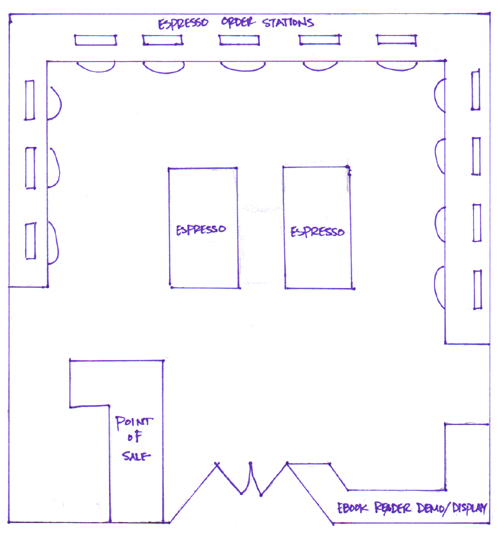
The problems? You know exactly what they are and obviously you aren’t interested in solving them.
You booksellers have been rolling around on the back of the consignment system like it’s catnip for too long—and it’s still going to bite you in the butt.
You publishers are doing everything you can to stymie ebooks and are determined to cling to your outmoded ways. You can lay off people all you want, but you’re not actually willing to do what it takes. Never fear, though! The economy will help you with that.
Now, in a quaint little town that is a suburb of Kansas City, they have a town square surrounding the 19th-century county courthouse. In one of those slender 19th-century 2-story buildings, there is a mom’n’pop bookstore that has been there for, oh, EVER. The top floor was always for used books, the bottom floor stocked to bursting with books. Then they put in a coffee shop. Last week, we found out they were phasing out the books altogether. Now, I ask you. What is a bookstore without books? It’s not. It’s a coffee shop.
I’ve been thinking about these issues for a long time and shaking my head sadly, wondering how long it’ll take before the consignment system collapses.
Say the above drawing is the bottom floor of the aforementioned 2-story 19th-century storefront on the town square. The 2nd floor could house a coffee shop or used books or books that you wanted to order to keep in stock (and you paid for them up front on a wholesale basis) because you’re a bookseller and you love books and books are a perfectly reasonable thing to have in a bookstore.
But do you see what is going on? A way to be inventory-free, using the just-in-time inventory system that half the rest of the retail industry in the world has been using for going on 15 years now.
You, Random Reader, are a book lover. You want a book you can hold in your hands. You go to Quaint Bookstore and they do not have what you want in their meager stock. NO PROBLEM! You sit down at one of the book stations. You browse the computer catalog (probably Ingram or Baker & Taylor). You pick your book. You punch in your credit card number (tied to the store’s point-of-sale system). The order goes directly to one of the Espresso machines behind you. You wait 10 or 15 minutes (by which time you’ve probably already ordered another 3 books), and out pops your book. You are GOOD TO GO.
Or hey! Maybe you don’t want to wait the 10 to 15 minutes, so you tap into your Quaint Bookstore account from home or work or school and order the book that way. You can pick up your Espresso when you pick up your espresso on the way to or from work or school.
And say you want an e-reading device, but you don’t want to get burned. You go to Quaint Bookstore and you pick up one of their demo devices loaded up with ebooks. You sit go upstairs to get an espresso (heh) and read for a while to see if you like it. If not, go back, pick up another one, and make sure you like what you’re getting. Then you buy it and boom, healthy profit for Quaint Bookstore on an e-reading device (which will probably get the customer back to buy at least 1 print book for every 10 ebooks they read—okay, I made up that number, but still!).
Honestly, I do not know why this has to be difficult. The technology’s there, waiting—no, begging—to be used. The consumers are there and will grow as the economy cycles back up again. With one Espresso machine, Quaint Mom’n’Pop Bookstore could get rid of its book stock, but still be a bookstore.
Did I mention there is a small liberal arts college in this town, too? Can you say “bypass the college bookstore for your textbooks”? Ka-ching.
But you know, I’m not even sure this particular Quaint Mom’n’Pop Bookstore ever heard of an Espresso and probably are afraid of ebooks, and are unwilling to look past the death of the consignment system. (I should probably ask them those questions before I assume things, eh?)
I tell you, the time is (almost) right for a new breed of independent bookseller.
There’s a book I really really really want to read. However, it’s only available in e-format 2 ways: Serialized on the author’s blog (i.e., on the computer—no thanks) and via Kindle (no thanks). Now, I’m getting ready to email him and ask him if it’s available any other way, so we shall see.
There’s another book I really really really want to read [dead link]. However, it’s only available in 4 formats (actually, 3 because 2 formats are identical in nature), none of which I can read on my ebook reader. The format I want is MS Reader (LIT). Why? Because I can break the DRM and put it on my ebook reader. Which, come to think of it, is probably why it’s not offered in that format.
Really, there’s enough good stuff out there in more accessible formats to waste time having to read on the computer. After having had my eBookWise for a mere 7 months, I’ve gotten to where I will forgo a title (no matter how badly I want to read it) if I can’t get it in a format that is accessible to me. Otherwise, I’ll just go to the library, where it likely won’t be.
We’re really trying to put The Proviso in as many places as possible in as many formats as we can. It’s not just in the B10 Mediaworx bookstore (8 DRM-LESS formats bundled together in a zip), but at Amazon in both trade paperback and Kindle, at Barnes & Noble, at Books-A-Million, at Powell’s, and now at ebooksjustpublished [out of print] (which takes you back to the B10 Mediaworx bookstore, but hey, it’s exposure).
Some time next week, The Proviso will be in the iTunes store as an iApp for iTouch/iPhone. Although we’ve formatted it into EPUB for those who’ve downloaded Stanza on their iTouch/iPhones, we really want to present as many options as possible to make it easy for every customer to read it the way they prefer to read it.
Because not being able to read a book I want to read the way I want to read it is beginning to weary me.
It’s been clear for months that it will be a not-so-merry holiday season for publishers, but at least one house has gone so far as to halt acquisitions. PW has learned that Houghton Mifflin Harcourt has asked its editors to stop buying books. […] Another agent who had also heard about the no-acquisitions policy at HMH called the move “very scary” and said it’s indicative of an industry climate worse than any he’s ever seen.
Predictions:
Yeah, it’s depressing, but A) everybody’s having a hard time, so boo hoo at you too, publishing and B) everything is cyclical.
Quite frankly, the economic downturn and the rise of the ebook couldn’t be timed better. You build up the low-cost or free alternative in the downswing (coupled with instant gratification), something people can afford and are open to, then you see it explode once the upswing begins.
 Dead tree books will NOT be a thing of the past (knock on wood), but the smart publishers and booksellers will find cheaper alternatives to bring those to market too. If you want to survive after an economic downturn, you must start thinking in the long-term instead of the short-term; you sure as heck aren’t making any money now, so figure out how to make money when everybody has some again.
Dead tree books will NOT be a thing of the past (knock on wood), but the smart publishers and booksellers will find cheaper alternatives to bring those to market too. If you want to survive after an economic downturn, you must start thinking in the long-term instead of the short-term; you sure as heck aren’t making any money now, so figure out how to make money when everybody has some again.
Pssst, publishers and booksellers:
It’s called the Espresso.
In kiosks.
At Wal-Mart, Target, and smack DAB in the middle of your chain or independent bookstore.
So I saw this in Publisher’s Weekly online yesterday and bookmarked it to blog about, but then Janet Reid beat me to the punch.
Recently, funny things have been happening in my slush pile. I find myself receiving well-written, correctly formatted, professional-looking query letters from bad writers. Imagine my chagrin: one minute I’m intrigued by a smoothly crafted query letter, the next I’m staring down at a crackpot writing sample.
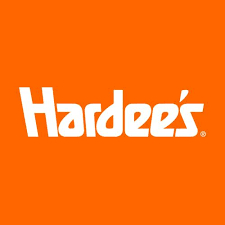 I wondered how long this would take.
I wondered how long this would take.
I will always and forever remember a story my dad told about Hardee’s barbecue sauce and a taste-tester he met. The point wasn’t to make a standout barbecue sauce. The point was to make the barbecue sauce as inoffensive as possible to the largest number of people.
So I’ll call it the Hardee’s BBQ Sauce Query.
One comment on Janet Reid’s blog summed up my thoughts quite nicely:
Post Summary: In the 21st Century, people can Google query on how to do something and find carefully composed instructions. Thus, the prior vetting process is no long efficient for the Literary Agent.
My 2 Cents: Awesome. Adjust or die.
PUBLISHERS
I’d like to see new and different in romance. It took Ellora’s Cave and Loose Id and Samhain to break you out into genres you wouldn’t touch before (and no, they’re not all erotica).
I’d like to see you lead the way into e-publishing but again, you didn’t get in gear until the above-mentioned trailblazers kicked your butts. Apparently not even Baen was able to get to you like those three did.
INDEPENDENT BOOKSELLERS
The consignment system of inventory management is, I believe, in its late afternoon and Barnes & Noble CEO Riggio wants to push it into that good night. Agent Richard Curtis (and foresightful creator of e-Reads) points out that it’s not going away–on the dead-tree book brick’n’mortar playground, but, he says,